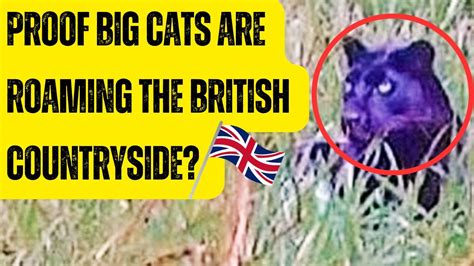The discovery of a big cat roaming the British countryside has sparked a wave of curiosity and speculation among wildlife enthusiasts and experts alike. The recent DNA evidence confirming the existence of these magnificent predators has reignited the age-old debate surrounding their origin and behavior. The comments from various individuals shed light on the diverse perspectives regarding the presence of big cats in the UK.
Amidst the intriguing discussions, concerns have been raised about the potential risks posed by these large felids to the local community. From worries about children’s safety to the impact on livestock and wildlife, the debate encompasses a wide range of viewpoints. While some express skepticism about the likelihood of big cat attacks, others highlight the need for caution and awareness in rural areas where these animals may roam.
The reminiscences shared by individuals who claim to have encountered these mysterious creatures add a personal touch to the narrative. Stories of close encounters and sightings from decades ago evoke a sense of wonder and curiosity about these elusive predators. The accounts paint a vivid picture of the British countryside as a habitat teeming with hidden wildlife, waiting to be discovered.
Furthermore, the DNA testing methods used to verify the presence of big cats have raised questions about the specificity of the results. Discussions around the types of big cats present in the UK and the accuracy of DNA tests offer insights into the scientific aspect of wildlife research. The detailed analysis of DNA samples from various genera provides a glimpse into the complex process of identifying elusive species based on genetic markers.
As theories abound regarding the origins of these enigmatic felines, the possibility of escaped pets or illegal breeding activities emerges as a plausible explanation. The interconnected web of wildlife trafficking and exotic pet ownership underscores the potential risks associated with human interference in natural ecosystems. The comments reflect on the impact of irresponsible animal ownership practices on local wildlife populations and the environment.
From comparisons with similar sightings in other parts of the world to references to popular culture icons like Bagheera from ‘The Jungle Book,’ the discourse surrounding big cat sightings in the British countryside delves into a rich tapestry of anecdotes and reflections. The blend of scientific analysis, personal anecdotes, and cultural references highlights the multifaceted nature of human-wildlife interactions and the implications for conservation efforts.
Despite the ongoing debate and skepticism surrounding the existence of big cats in the UK, the allure of these mysterious predators continues to captivate imaginations and fuel discussions about the country’s wild landscapes. Whether fueled by scientific evidence, personal accounts, or speculative theories, the fascination with big cats roaming the British countryside serves as a testament to our innate curiosity about the natural world. As the mysteries unfold and new insights emerge, the quest to unravel the truth behind these elusive creatures remains a compelling journey of discovery.
The revelations from DNA testing, coupled with the diverse perspectives shared in the comments section, offer a nuanced portrayal of the complex relationship between humans and wildlife. As the debate continues to evolve and new evidence comes to light, the enigma of big cats in the British countryside serves as a reminder of the enduring mysteries that nature holds and the importance of conservation efforts to protect our precious wildlife heritage.


Leave a Reply